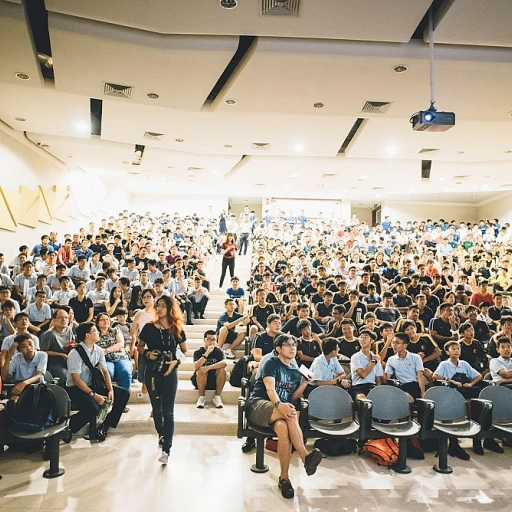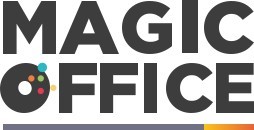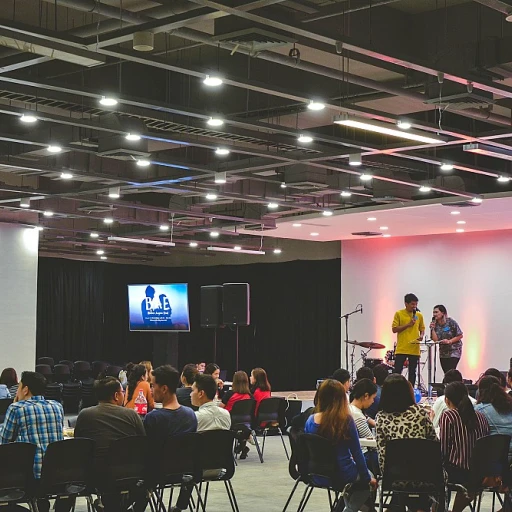
Navigating the New Normal: Post-Pandemic Office Management
Embracing Innovation in the Ever-Evolving Office Space
The world of office management is undergoing a seismic shift, as the aftermath of the global pandemic redefines the 'new normal'. Thriving in this landscape demands a proactive approach—one that embraces change, leverages technological advancement, and values the cornerstone of any business: its people. As office management analysts, we've seen a surge in the importance of data-driven decision-making and the integration of smart office technology, both pivotal in securing a competitive edge in the dynamic corporate environment.
According to a report by McKinsey, companies that harness the power of analytics have a 23% higher probability of outperforming their competitors in terms of new product introduction and customer satisfaction. This statistic underscores the urgency for office managers to become adept at navigating sprawling data landscapes, as data analytics is no longer a luxury but a necessity for enhanced decision-making.
It's also clear that fostering a work environment that accentuates employee wellbeing is crucial. A study by Oxford University found that happy workers are 13% more productive. By prioritizing employee health and satisfaction, office managers not only boost individual productivity but also improve staff retention rates, creating a virtuous cycle that benefits both the employees and the organization.
Incorporating smart office solutions, from AI-powered assistants to IoT-enabled environments, can streamline operations and create a more agile workplace. Deloitte highlights that smart buildings can lead to a 15% reduction in costs associated with energy, property management, and maintenance, which translates into significant savings and efficiency gains for any organization.
In every section of this comprehensive guide, we provide strategies and tools for office managers to navigate these transformative times with confidence. We delve into the intricacies of post-pandemic management, the analytics that underpin savvy leadership, the marvels of modern office technology, and the indispensable practice of nurturing the workforce. Armed with this knowledge, office managers will be well-equipped to lead with vision and navigate the ever-advancing tide of management innovation.
Leveraging Data Analytics for Enhanced Decision-Making
Adapting to Hybrid Work Models in Office Settings
In the wake of the global pandemic, office management has undergone a seismic shift towards what industry experts now term the 'new normal.' A recent Gartner survey revealed that 82% of company leaders intend to permit employees to work remotely some of the time. This striking statistic underscores the necessity for office managers to adapt their strategies to accommodate hybrid work models. Strategies for managing a distributed workforce are paramount for ensuring seamless operations that can pivot as needed in response to evolving workplace trends. Office managers are now tasked with finding the sweet spot between flexibility and productivity, ensuring that remote work benefits both the employee and the company.
Creating an Agile Office Environment
The concept of an agile office environment has gained traction, with an emphasis on creating spaces that are adaptable to various working styles and needs. This approach to office management is not just about physical space but extends to fostering a nimble mindset within the leadership and the team. Leading global research firms like McKinsey & Company highlight the significance of agility in responding to rapid changes and maintaining a competitive edge. Implementing an agile framework within office management practices can lead to a 20-30% increase in financial performance, according to their studies. Office managers are encouraged to embrace agility in their day-to-day operations, laying the groundwork for a resilient and forward-thinking corporate culture.
Enhancing Communication and Collaboration
Effective communication and collaboration tools have proven to be the linchpin of successful remote and hybrid work models. An article published by Forbes suggests that robust communications platforms can increase team efficiency by up to 30%. As such, office managers are investing in top-tier project management and communication software solutions to streamline workflows and keep teams in sync regardless of their physical location. Regular virtual check-ins and an open-door policy, even digitally, are recommended practices to ensure that all team members feel connected and supported. By fostering a culture of open communication, office managers are laying the foundations for sustained innovation and teamwork.
As we explore ways to harness data analytics for more informed decision-making, prioritize the integration of smart technology, and focus on employee wellbeing, the role of the office manager continues to evolve. Utilizing these strategies not only paves the way for a productive and engaging work environment but also primes an organization for the next wave of management innovation.
Implementing Smart Office Technology for a Competitive Edge
Embracing Data-Driven Decision Making in Office Management
In today's digital era, office management intertwines with technology, and nowhere is this more evident than in the ability to leverage data analytics. Embracing a data-driven culture within an office environment empowers managers to not only make informed decisions but also to anticipate future trends and adjust strategies accordingly. Recent statistics indicate that companies who adopt data analytics can see an improvement in decision-making efficiency by up to 5 times.
For instance, by analyzing employee performance data, management can pinpoint areas of inefficiency and work towards enhancing productivity. Moreover, customer feedback data allows for refining client services, which is critical because, as per a survey, 89% of businesses compete primarily on customer experience.
Optimizing Office Layout Using Analytics
Another example of leveraging data analytics lies in optimizing office layouts. By studying employee movement and space utilization data, offices can reduce wasted space, which can translate to savings. Offices utilizing these strategies could potentially see a 10-30% reduction in their space costs. Office managers can also employ occupancy analytics to design workspaces that not only promote efficiency but also foster collaboration and creativity among staff.
- Reduce space costs by 10-30%
- Increase employee satisfaction through tailored workspace designs
Forecasting and Preemptively Addressing Office Needs
Predictive analytics can also play a role in office management. Forecasting tools can analyze a range of data to preemptively address office needs. For example, energy consumption data can be utilized to optimize resource use and cut down on overhead costs, which are significant considering that commercial buildings account for roughly 20% of the country's energy consumption. Furthermore, by assessing workflow data, office managers can predict peak times and adequately prepare, whether that involves assigning tasks or adjusting staffing levels.
Recent advancements in data analytics software make this technology accessible for office managers. Incorporating predictive analytics could result in up to a 20% decrease in operational costs for those able to harness its power.
Prioritizing Employee Wellbeing to Boost Productivity and Retention
Unlocking the Power of the Smart Office
In today's dynamic business landscape, integrating smart office technology has become a cornerstone for achieving a competitive advantage. Smart technology is more than just a buzzword; it's a strategic asset that can streamline operations, enhance communication, and lead to more informed decision-making. According to a report from Statista, the global smart office market is projected to reach approximately $57 billion by 2025, indicating a keen industry interest in intelligent systems.
Building an Interactive Workplace with IoT
The Internet of Things (IoT) has revolutionized the way office spaces function, leading to the creation of highly interactive and responsive environments. Implementing IoT solutions can result in energy savings of up to 30%, as noted by energy management findings. Examples include automated lighting, climate control, and security systems that adapt in real-time to occupancy and user preferences — translating to both cost efficiency and an enhanced user experience.
Enhancing Collaboration with Digital Tools
In our connected age, collaboration has ascended to new heights. The use of digital platforms such as Slack, Asana, and Microsoft Teams facilitate seamless project management and communication, becoming critical for agile office management. These tools, empowered by cloud computing and mobile technology, allow for real-time updates and virtual teamwork, which is essential in managing a contemporary workforce where remote and hybrid work models are prevalent.
Optimizing Space Utilization with Smart Design
Office space planning is no longer about the static assignment of desks and meeting rooms. With the advent of smart office design, the utilization of space can be optimized in real-time. Analytics-driven seating arrangements and flexible workspaces not only optimize the use of square footage but also cater to employee preferences and needs, which in turn can improve satisfaction and productivity—a key point highlighted in workplace environment studies.
Fostering a Tech-Driven Culture
As a leading Office management analyst, I insist that adopting a tech-driven culture within the office is vital. This encompasses training and support structures to assist employees in making the most of these technological investments. A quote from an industry thought leader echoes this sentiment, 'To fully harness the potential of smart office technologies, businesses must foster an environment that encourages adaptation and continuous learning.'
Through careful planning and targeted investment in smart office technology, you can create a workspace not only equipped for the challenges of today but also poised to embrace the innovations of tomorrow.






